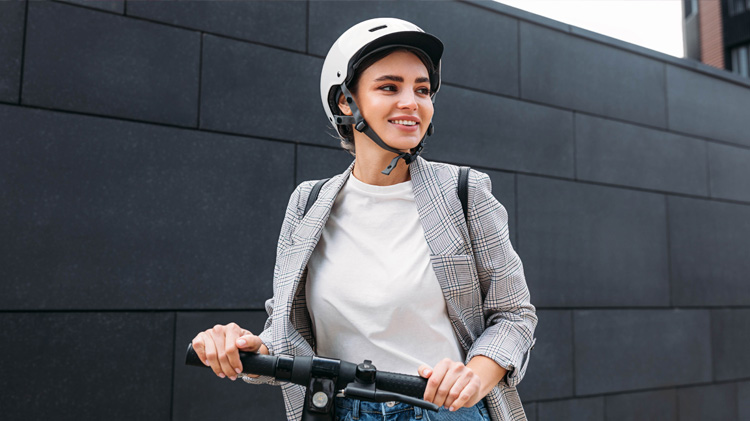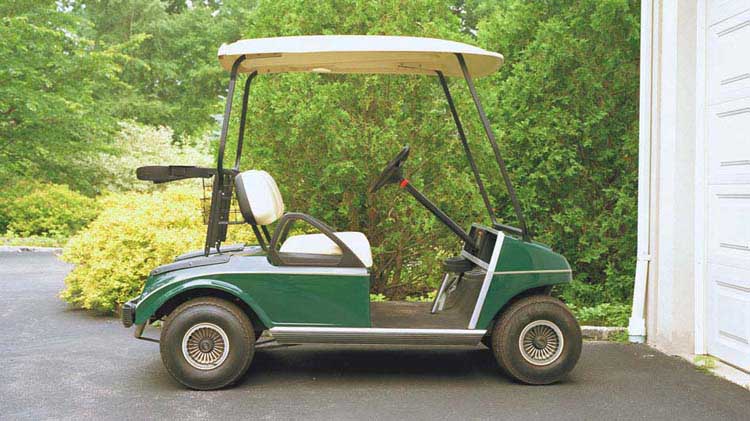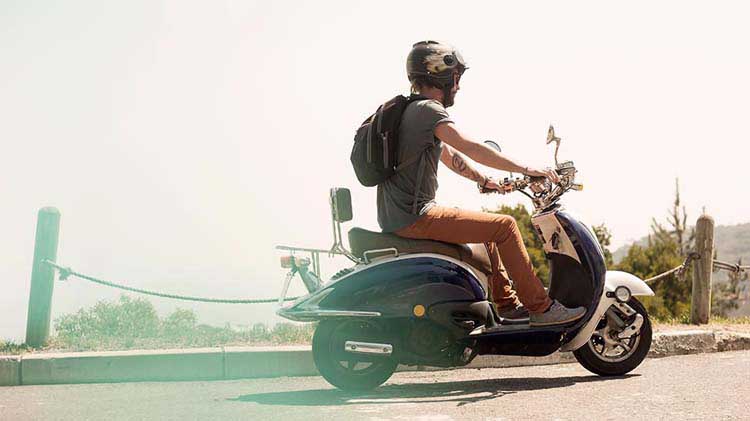Renting bikes and scooters? Keep safety in mind
Popular rentals make it easy to whizz around town, but it’s important to know the rules — and risks — of these personal transportation devices.
There’s nothing more fun than taking an impromptu scooter or bike ride to get around town. But riding and renting these personal transportation devices, or PTDs, means understanding a new set of rules — and risks. Here’s what you need to know about electric scooter safety and bicycle safety rules before you hop on.
Start with a pre-ride check
Are the tires pumped? Is the steering working properly? Can you squeeze the brakes? If renting a bike, be sure to adjust the seat to your height. A quick check can make it easier to stay safe on the road. If you find the device is not up to par, most ridesharing offerings allow users to declare a PTD in need of service.
Wear a helmet
Even though helmets are not always legally required — and often not available for rent — bringing your own is key, especially if you’re going long distances or take frequent rides, such as biking to work. The helmet should sit just above your eyebrows to cover your forehead and have a chin strap that fits snuggly.
Follow the road (rules)
You may not be driving a car, but it’s just as important that you abide by the rules of the road. That means obeying traffic signs, stoplights and speed limits. If sharing the lane, both bikes and scooters need to stay on the road to the right of traffic and allow other vehicles to pass on the left. In most states, scooters and bikes cannot be ridden on sidewalks or with another person.
Check your local driver's license policies
Forgot your ID? It’s usually OK. Due to their lower speeds of electric bikes (ebikes) and scooters, most places don’t require a valid driver’s license as part of the rental agreement. However, some states classify scooters as a kind of moped, which do require a driver’s license to operate. Most rental companies require users to be at least 18 years old to rent PTDs (or 16 with parental consent).
Opt for the bike lanes
Cities are increasingly using dedicated bike lanes to keep commuters safe, and it’s important to choose a route that incorporates as many of them as possible. Some online maps offer cycling directions, which direct you to dedicated lanes in the area. These lanes are often protected from other forms of traffic, making it safer to get to your destination.
Understand your liability
Most bike- or scooter-sharing companies offer users little in the way of insurance. If you’re injured, you’ll likely need to use your own medical insurance for treatment. Electric scooter rental and electric bike rental policies vary slightly and so does any available coverage from the company. Keep in mind: These devices are not covered by your auto insurance policy. You may also be liable for expenses if you cause an accident.
Know your destination
Just because you’ve rented a scooter doesn’t mean you can cruise anywhere. Most scooters and ebikes will stop working if they are taken outside of the coverage area — for instance, outside of city boundaries — and will be temporarily geofenced out of service. That means the scooter will slow to a stop when approaching the edge of the coverage area.
Don't get charged for not ending your ride
Knowing where to dock your bike or lockup your scooter is essential. You may also be asked to take a photo or scan a code after you’ve ended your ride. PTDs that are not secured correctly can result in additional charges to your account.




